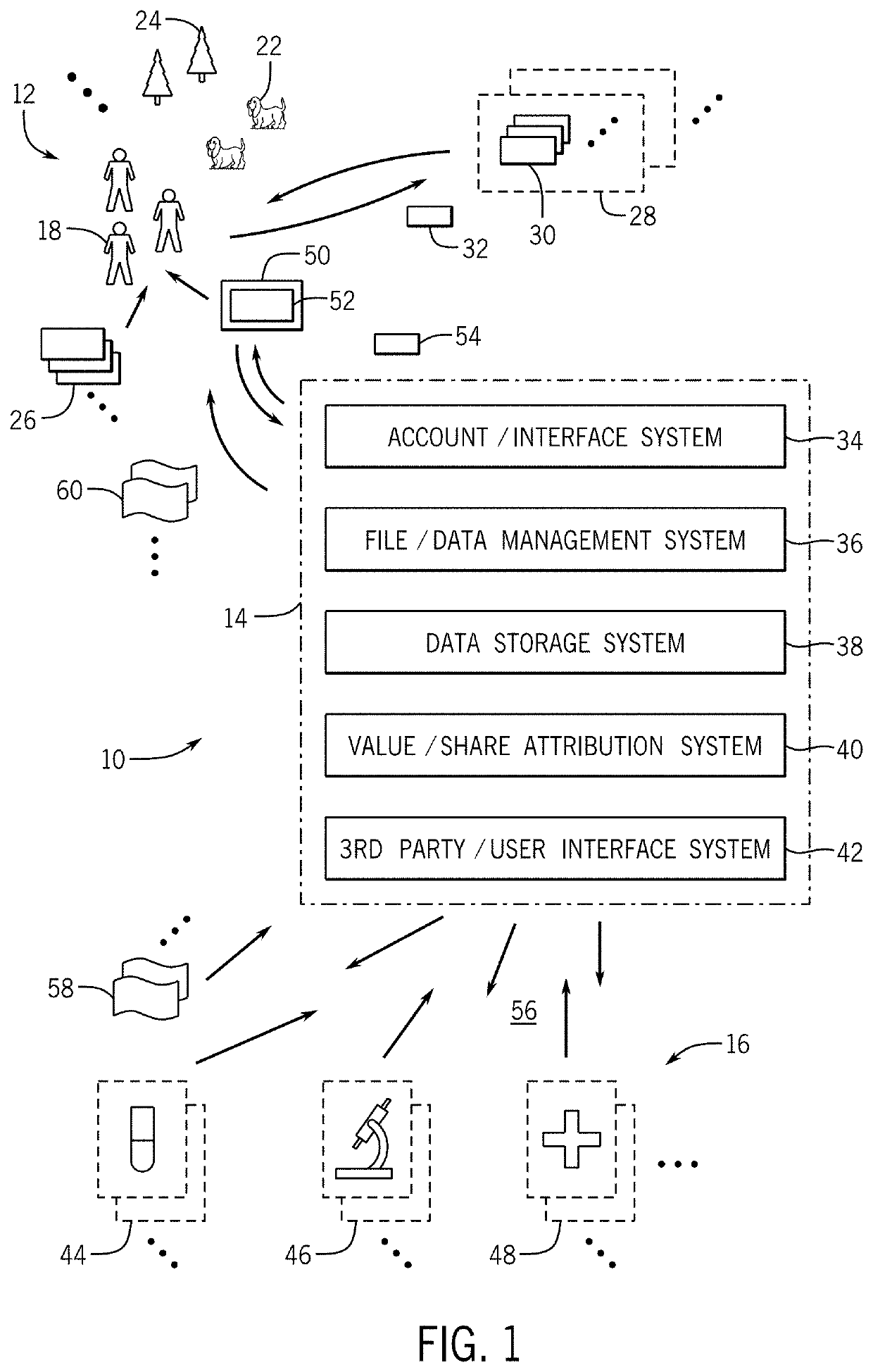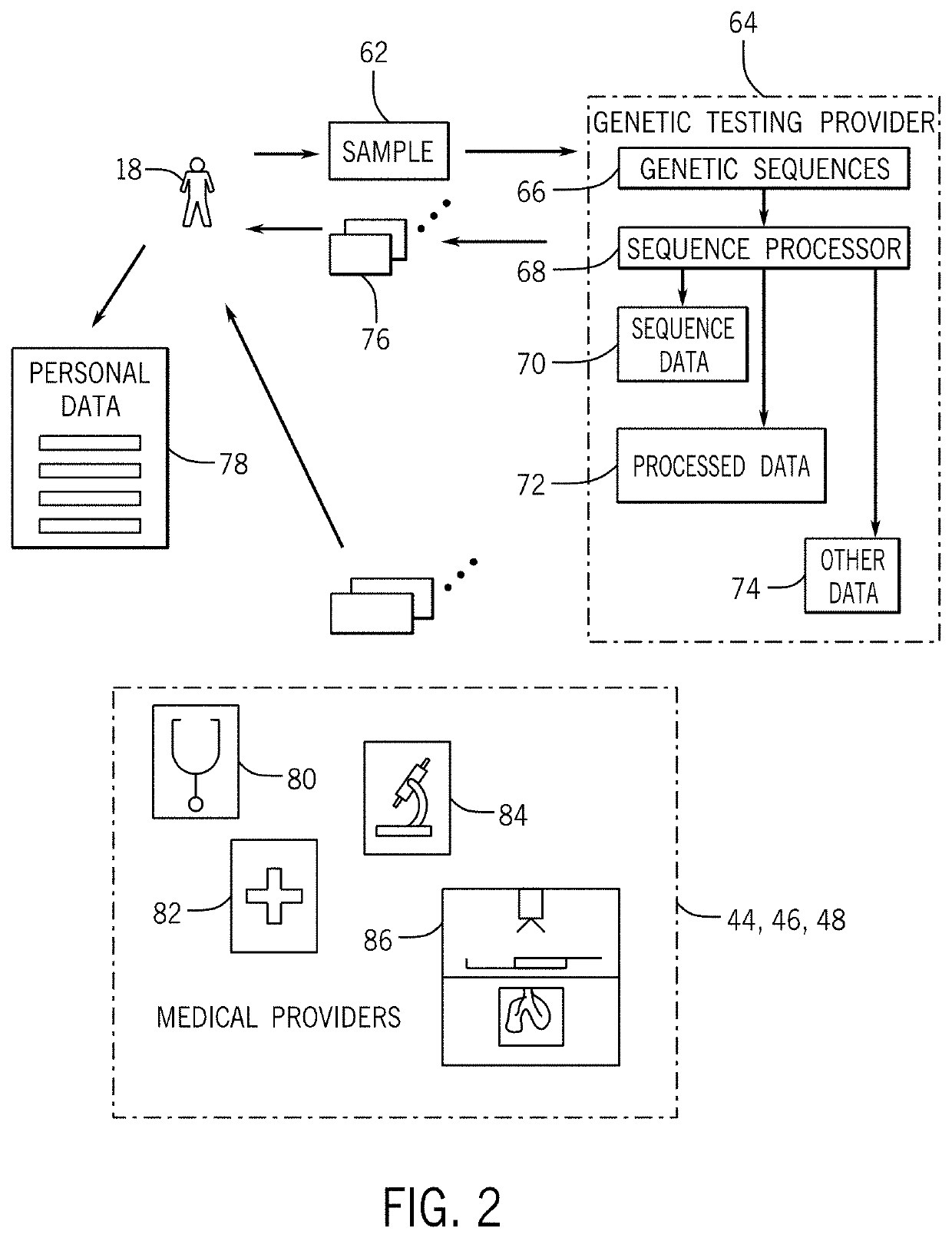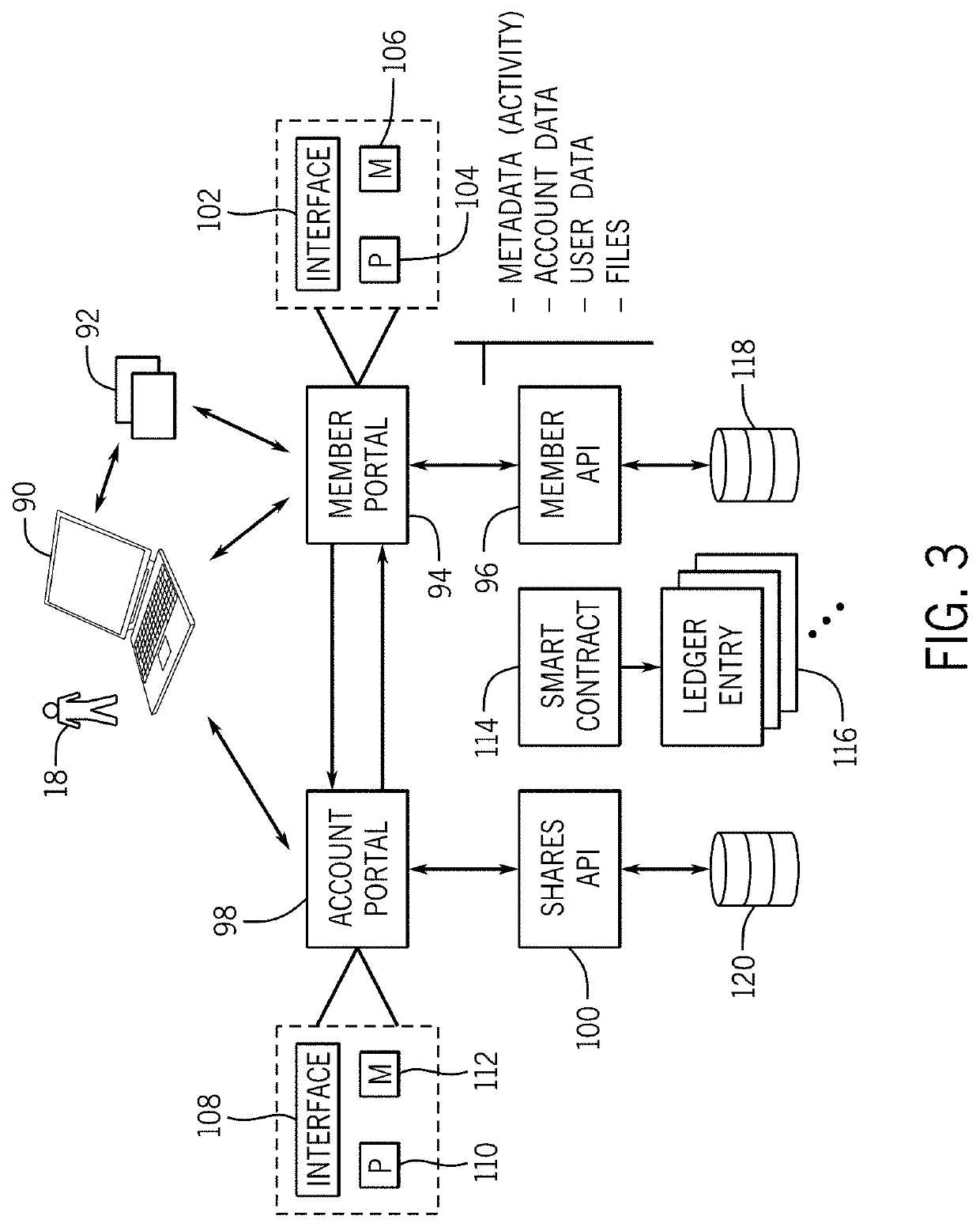De-identification omic data aggregation platform with permitted third party access
a technology of omic data and aggregation platform, which is applied in the field of personal data aggregation, can solve the problems of not comprehensively covering the human genome, not being able to identify the genomic association, and data of little interest to the pharmaceutical industry, so as to maximize the value of the database and increase the value of the coin
- Summary
- Abstract
- Description
- Claims
- Application Information
AI Technical Summary
Benefits of technology
Problems solved by technology
Method used
Image
Examples
Embodiment Construction
System and Method Overview
[0056]The inventions disclosed here aim to build the world's first and largest human health database that is owned or substantially owned by its community and designed to have key functions powered by trusted, transparent, and tamper-evident data management and data processing technologies, such as blockchain. Through community participation and rewards towards the greater good of human health, the system may create a dynamic, secure, and longitudinal database along with a supporting ecosystem. By making this database available to researchers, the system intends for discoveries to lead to new treatments, increased actionability, and greater predictive power of genomic information for disease and wellness applications. The personal health impact, societal health benefits, and economic value that will be created through clearer associations between genomics and health outcomes can be realized in myriad ways, including accelerating a true era of precision medi...
PUM
 Login to View More
Login to View More Abstract
Description
Claims
Application Information
 Login to View More
Login to View More - R&D
- Intellectual Property
- Life Sciences
- Materials
- Tech Scout
- Unparalleled Data Quality
- Higher Quality Content
- 60% Fewer Hallucinations
Browse by: Latest US Patents, China's latest patents, Technical Efficacy Thesaurus, Application Domain, Technology Topic, Popular Technical Reports.
© 2025 PatSnap. All rights reserved.Legal|Privacy policy|Modern Slavery Act Transparency Statement|Sitemap|About US| Contact US: help@patsnap.com



